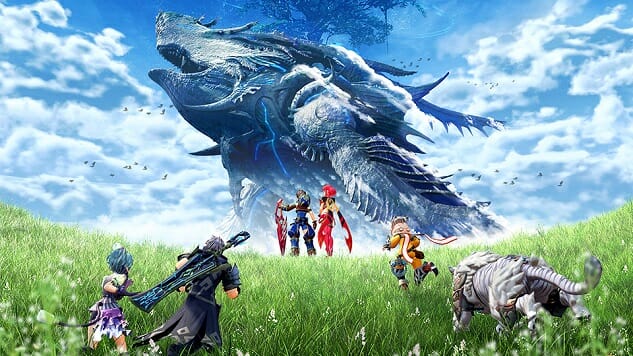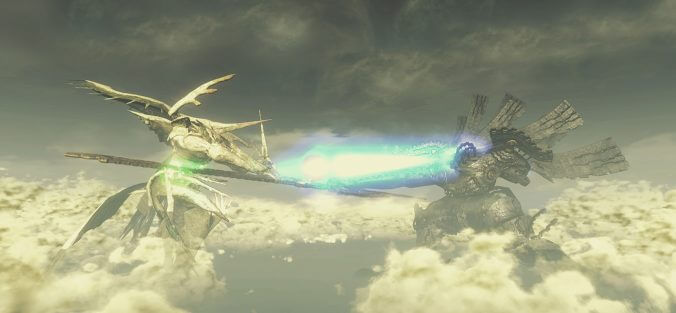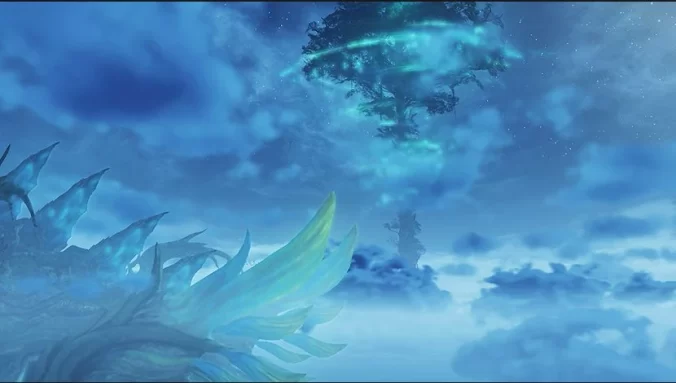Xenoblade Chronicles Tells Stories for Our Times

Note: this piece will contain story spoilers for the entirety of the numbered Xenoblade Chronicles trilogy and their DLC. There will be neither discussion nor spoilers for Xenoblade Chronicles X (as incredible as that game also is) as its narrative and themes are different enough to not be relevant to this particular discussion.
I’ve been thinking about Xenoblade again. This tends to happen to me a lot; it’s a bit of a problem, actually. These silly anime games consume an almost concerning amount of my mental space no matter what else is going on in my life. I’ve actually got some decent reasons this time, though. For one thing, Xenoblade Chronicles 3 just had its first anniversary, marking one year since what could be called the finale for this era of the series and the first birthday of what is probably my favorite game right now.
But, more importantly, I got to thinking about Xenoblade after reading this excellent piece from writer Jay Castello about The Legend of Zelda: Tears of the Kingdom. Castello talks about how the latest Zelda game seems irrevocably married to its world’s status quo—“saving Hyrule” means fighting off the evil invading army and restoring the rightful ruler to her throne, and the game ends triumphantly with your success in this regard. Nothing meaningful changes, and even Link’s lost arm grows back; the ultimate victory is the restoration of the established order of things. And it’s not just Zelda; many game stories in general shy away from really challenging their own worlds, and thus have very little to say about our own. I can’t count the number of times I’ve been disappointed playing a game that puts tons of work into crafting a fascinating fantasy world only to never really put the structures of that world to task (Final Fantasy XV and Skyrim jump to mind as examples of this). Unsurprisingly, in a highly corporatized industry, games rarely take the jump to question the way the world could be.
Which is why Xenoblade Chronicles sticks out in my mind so much. Where other games seem intent on creating worlds that need to be saved, Xenoblade shows us worlds that need to be changed radically, and, crucially, espouses the radical optimism that said change can actually happen. These stories have stuck with me so much over the years because frankly they’re some of the only games I’ve encountered anywhere near this scale which are willing to go there—willing to say “something is seriously wrong with the status quo, and we have to change it.”
So I’d like to discuss each numbered game in the trilogy so far and get into how these worlds better reflect our own, in their deeply wrought injustices and unthinkable cruelties, but also in their stunning beauty and constant ability for change.
Xenoblade Chronicles
The first game in the Xenoblade trilogy is set apart from the other two for taking its time to get at some of its more radical themes. Where 2 and 3’s protagonists start out their games as optimists and dreamers whose explicit goals are to radically change the worlds they live in, the first game’s protagonist, Shulk, is not so at all. Shulk lives in a world made up of the dead bodies of two massive titans, the naturalistic Bionis and the robotic Mechonis. These titans fought each other to the death back in time immemorial, and now, untold centuries later, the inhabitants of each titan’s body continue to attack each other in a long, seemingly unending cycle of violence and trauma. Shulk, a resident of the Bionis, does not at first see the senselessness of the fighting because he himself is entirely caught up in the villainization and otherization of the Mechonis. His motivation at the start of the game, shared by his traveling companions Reyn, Dunban, and especially Sharla, is to wipe out all of the Mechon (robots from the Mechonis) as revenge for all of the death and trauma they have inflicted on the people of the Bionis. They set out on their adventure initially with explicitly genocidal intent as Sharla vows that she “won’t stop until I’ve scrapped each and every one of [them].”
There’s a palpable discomfort to the early game of Xenoblade. You sympathize with Shulk and his companions deeply, having seen the destruction they’ve had to endure, but the revenge plot feels extreme, guided chiefly by rage. If, like me, you played one of the most recent Super Smash Bros. games first, you probably expected Shulk to be a very different type of guy from this quiet, awkward ball of fury, and you’re not sure how you feel about his goals. The rest of the story becomes about further deepening that discomfort and coming to realizations and revelations about the world which allow you, and Shuk, to break out of your black-and-white perspective.
One of the biggest of these revelations comes at around the halfway point, when you discover that the Mechonis, too, is home to intelligent life known as the Machina. The Machina want peace and safety just as much as your people, and, crucially, are equally critical of their leader Egil and his Mechon army’s constant invasion of the Bionis, so much so that his own father asks you to fight and kill him. This marks a turning point in the game’s story—up to now, the Mechonis has just been the enemy, an enemy which Shulk has only recently and barely begun to question his war against. Now, some much-needed nuance begins to seep in—perhaps it is not simply the Mechonis who needs to be stopped, but just one powerful individual from it.
But as you climb towards his base at the Mechonis’ head, you learn more and more about the history of the Mechonis, a history conveniently forgotten on the other titan. The titans had not always been at war, and it was not the Mechon invasions that started the fighting. You learn that it was actually the Bionis, controlled by Zanza, creator and self-appointed god of this world, who set the fighting in motion, attacking the Mechonis first to exert his will upon both titans. You learn that not only did Zanza start the fight, he continues to be its primary beneficiary—the dead bodies of the residents of the Bionis serve as his food and fuel to keep on living and remain in power, and so he continues to orchestrate the endless war. And you learn that Egil’s invasions have not been out of mere hatred but a mix of the rageful revenge Shulk himself once sought and a strategic ploy to starve out Zanza by wiping out all his fuel. Your view of the world is entirely turned on its head as you come to see that it is not the people of the Bionis nor the Mechonis who are the real enemy and cause of the suffering of the world, but rather those in power who continue to benefit and profit from their fighting.
One of the headlining elements of both the gameplay and the story is Shulk’s visions, a power which lets him see the future. You use them to prevent the deaths of your friends and allies, to know where you must travel to next, and even to figure out which collectibles you’ll want to hold on to. This power is the defining tool of Shulk’s journey, giving him a needed edge in his losing battles, but as you discover late in the game, the visions his power shows him come straight from Zanza himself. Zanza sees Shulk as merely a vessel through which to enact his will upon the world; he controls the information he knows, and he shows him a limited view of what the future will look like and a limited range in which to change it. Zanza limits the imagination of the future in order to manipulate Shulk into fighting for him and his desires. The core arc of the game, then, is about learning to see beyond that limited scope, rejecting the hateful view of the world prescribed to him by its profiteers, and choosing instead to imagine a radically new future outside of Zanza’s scope. In his last act at the end of the game, briefly granted Zanza’s godly powers, Shulk uses them to create a new world, rejecting the chance to ascend to godhood himself and continue Zanza’s status quo in favor of creating a world with no gods at all.

